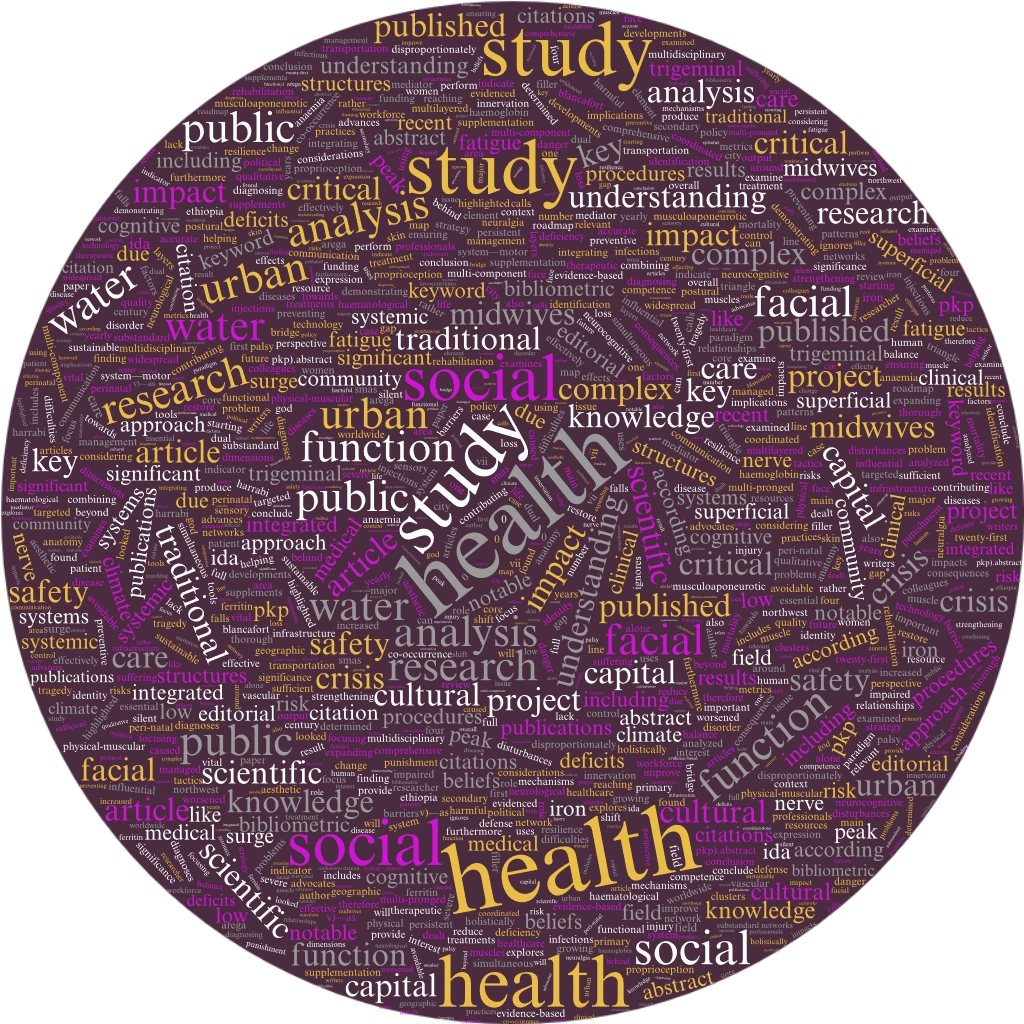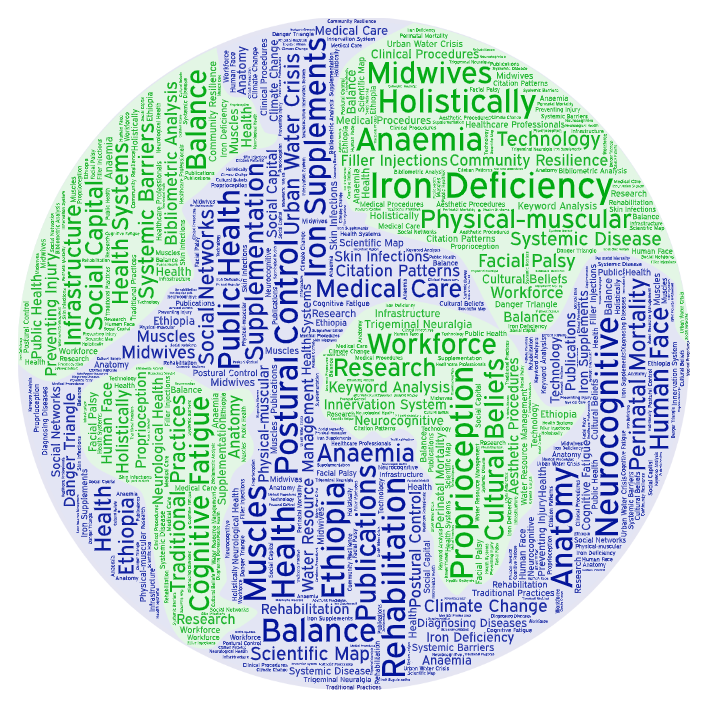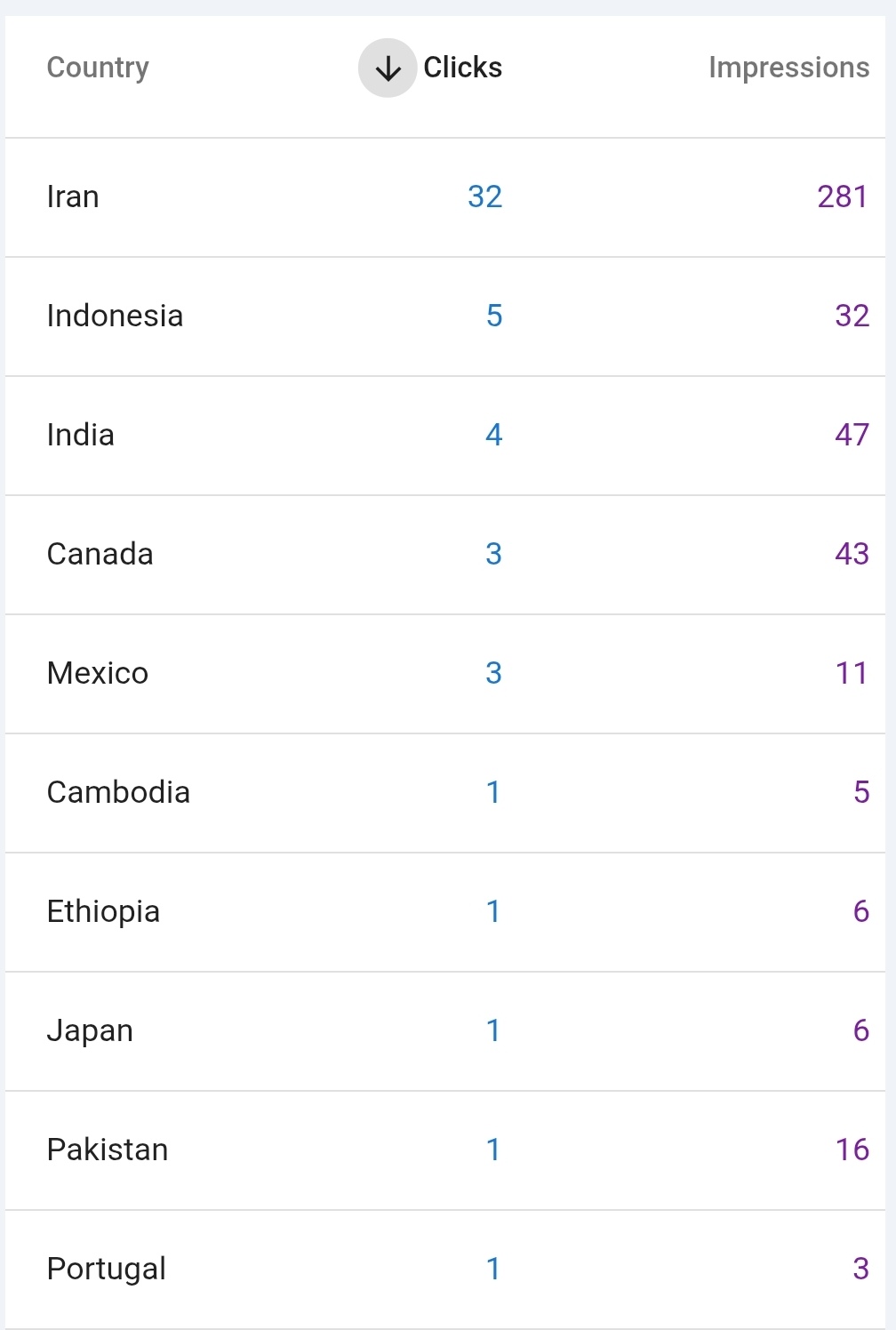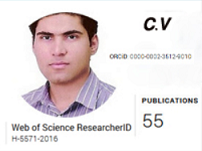Mapping the Intersection of Mental Health, Quality of Life, and Primary Dysmenorrhea: A Bibliometric and Thematic Analysis
Global Research Trends in Mental Health, Quality of Life, and Primary Dysmenorrhea
##semicolon##
https://doi.org/10.1000/q8k82e08##semicolon##
Bibliometrics, Adolescent Health, School-Based Intervention, Menstrual Disorders.##article.abstract##
A thorough bibliometric analysis of research on dysmenorrhea: patterns worldwide, relevant data and emerging trends. In addition to mapping global trends, identifying key contributors and research hotspots, and synthesizing findings on the clinical impact of the disease, in particular its key links with mental health and quality of life, the study provides a comprehensive bibliometric analysis of dysmenorrhoea research. To monitor the thematic development of this field, we have examined three decades of publications, mostly from the Science Core website. We focused on metrics such as annual output, geographical productivity, impact on citations, authorship, institutional collaboration, and keyword ownership. Since 2010, the volume of research conducted on dysmenorrhea has increased dramatically worldwide, demonstrating that it is a robust field of inquiry. China had the highest number of publications (n = 38) and the US had the highest average number of citations per paper (12.4), which suggests a higher impact per paper. Despite this success, international cooperation remains low, indicating that most research is conducted within national silos. The main thematic areas are pathogenesis (prostaglandins, inflammatory disorders), different therapeutic approaches (pharmacological and non-pharmacological), and public health effects. An important new field is the study of functional brain connections and the neurobiological causes of persistent menstrual pain. Clinical data show that primary dysmenorrhoea is very common (around 70-71 percent) and has important consequences such as reduced quality of life and school absenteeism (14-21 percent). Importantly, there is a strong inverse correlation between the severity of dysmenorrhoea and mental health, with severe pain being significantly correlated to depressive symptoms (PR 2.89) and depression (PR 2.60). Dysmenorrhoea is one of the most common and difficult global health problems. The strong and empirically supported link between this condition and poor mental health illustrates the inadequacies of the single-pharmaceutics approach. To address the full physical, emotional and social burden of the disease, the future of clinical practice will require a biopsychosocial approach that includes psychological interventions such as mental health education programmers. Continuing mechanistic research into neurobiological and genetic factors and increasing international cooperation are essential for the future of this area
##plugins.themes.default.displayStats.downloads##
##submission.citations##
Barnett, M. A., Scaramella, L. V., & Leve, L. D. (2008). Parenting stress and child behavior problems: The mediating role of parental self-esteem. Journal of Family Psychology, 22(5), 796–806. https://doi.org/10.1037/a0013513.
Banikarim, C., Chacko, M. R., & Harvey, E. (2000). Prevalence and impact of dysmenorrhea on Hispanic adolescent females. Archives of Pediatrics & Adolescent Medicine, 154(11), 1127–1131. https://doi.org/10.1001/archpedi.154.11.1127.
Calhoun, L. G., & Tedeschi, R. G. (Eds.). (2006). The handbook of posttraumatic growth: Research and practice. Lawrence Erlbaum Associates.
Compas, B. E., Jaser, S. S., Dunn, M. J., & Rodriguez, E. M. (2012). Coping with chronic illness in childhood and adolescence. Annual Review of Clinical Psychology, 8, 455–480. https://doi.org/10.1146/annurev-clinpsy-031611-093420.
Chen, Y., Wang, L., & Liu, J. (2022). Global trends in dysmenorrhea research: A bibliometric analysis from 2000 to 2021. Frontiers in Public Health, 10, Article 876543. https://doi.org/10.3389/fpubh.2022.876543.
Chen, H. Y., Liu, Y. H., & Chen, C. M. (2009). The effectiveness of a school-based psychoeducational program for primary dysmenorrhea in Taiwanese adolescents. Journal of Clinical Nursing, 18 (10), 1472–1480. https://doi.org/10.1111/j.1365-2702.2008.02653.x.
Chinyere, O. C., & Udigwe, G. O. (2011). Dysmenorrhea among female undergraduates in Enugu, Nigeria. International Journal of Women's Health, 3, 93–98. https://doi.org/10.2147/IJWH.S16918.
Dawood, M. Y. (2006). Primary dysmenorrhea: Advances in pathogenesis and management. Obstetrics & Gynecology, 108(2), 428–441. https://doi.org/10.1097/01.AOG.0000227700.35395.2c.
Deater-Deckard, K. (2004). Parenting stress. In C. D. Spielberger (Ed.), Encyclopedia of applied psychology (Vol. 3, pp. 613–618). Academic Press. https://doi.org/10.1016/B0-12-657410-3/00275-0.
Dekel, R., Solomon, Z., & Ein-Dor, T. (2013). Posttraumatic growth among Israeli women: The role of resilience and social support. Journal of Loss and Trauma, 18(4), 330–342. https://doi.org/10.1080/15325024.2012.748468.
Hill, C. E., & Mamgain, R. (2017). Meaning making and posttraumatic growth in psychotherapy: A review. Psychotherapy Research, 27(3), 261–272. https://doi.org/10.1080/10503307.2015.1118207.
Luthar, S. S., & Cicchetti, D. (2000). The construct of resilience: Implications for interventions and social policies. Development and Psychopathology, 12(4), 857–885. https://doi.org/10.1017/S095457940000430X.
Mafakheri, M. (2025). The role of post-divorce growth as a mediator in the association between psychological resilience of divorced women and parental stress. Health Promotion Sciences, 1(1), 41–48. https://doi.org/10.1000/zfbydj72.
Masten, A. S. (2001). Ordinary magic: Resilience processes in development. American Psychologist, 56(3), 227–238. https://doi.org/10.1037/0003-066X.56.3.227.
McAdams, D. P., & McLean, K. C. (2013). Narrative identity. In S. J. Schwartz, K. Luyckx, & V. L. Vignoles (Eds.), Handbook of identity theory and research . 351–373. Springer. https://doi.org/10.1007/978-1-4419-7988-9_18.
Park, C. L. (2010). Making sense of the meaning literature: An integrative review of meaning making and its effects on adjustment to stressful life events. Psychological Bulletin, 136(2), 257–301. https://doi.org/10.1037/a0018307 .
Proctor, M., & Farquhar, C. (2006). Diagnosis and management of dysmenorrhoea. BMJ, 332(7550), 1134–1138. https://doi.org/10.1136/bmj.332.7550.1134.
Sandler, I. N., Wolchik, S. A., MacKinnon, D. P., Ayers, T. S., & Roosa, M. W. (2000). Testing mediational models with longitudinal data: Questions and tips in the use of structural equation modeling. Journal of Abnormal Psychology, 109(4), 669–682. https://doi.org/10.1037/0021-843X.109.4.669.
Tedeschi, R. G., & Calhoun, L. G. (2004). Posttraumatic growth: Conceptual foundations and empirical evidence. Psychological Inquiry, 15(1), 1–18. https://doi.org/10.1207/s15327965pli1501_01.
Iacovides, S., Avidon, I., & Baker, A. N. (2015). What we know about primary dysmenorrhea today: A critical review. Human Reproduction Update, 21(6), 762–778. https://doi.org/10.1093/humupd/dmv039.
Ziaei, S., Mohammadi, E., & Salmani, F. (2021). The prevalence of primary dysmenorrhea and its associated factors among Iranian female students: A systematic review and meta-analysis. BMC Women's Health, 21(1), Article 353. https://doi.org/10.1186/s12905-021-01512-3.
Wong, L. P., & Khoo, E. M. (2010). Dysmenorrhea in a multiethnic population of adolescent Asian girls. International Journal of Gynecology & Obstetrics, 108(2), 139–142. https://doi.org/10.1016/j.ijgo.2009.08.014.
UNICEF. (2023). Integrating menstrual health into national school curricula: Lessons from pilot programs in Uganda and Iran. United Nations Children’s Fund. https://www.unicef.org/reports/menstrual-health-curricula-2023.
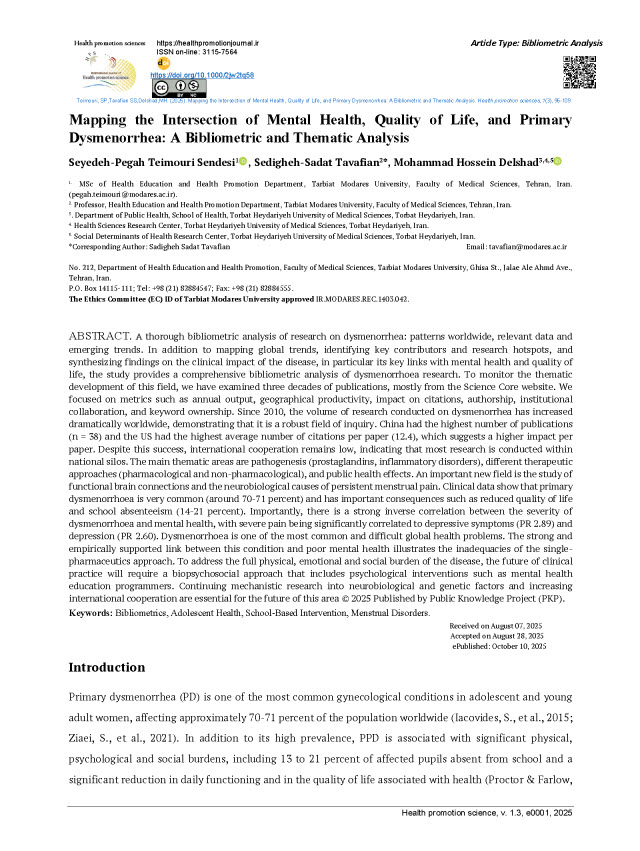
##submission.downloads##
##submissions.published##
##issue.issue##
##section.section##
##category.category##
##submission.license##
##submission.copyrightStatement##
##submission.license.cc.by-nc-nd4.footer##This open-access journal is published under the terms of the Creative Commons Attribution-NonCommercial 4.0 International License which permits Share (copy and redistribute the material in any medium or format) and Adapt (remix, transform, and build upon the material) under the Attribution-NonCommercial term








